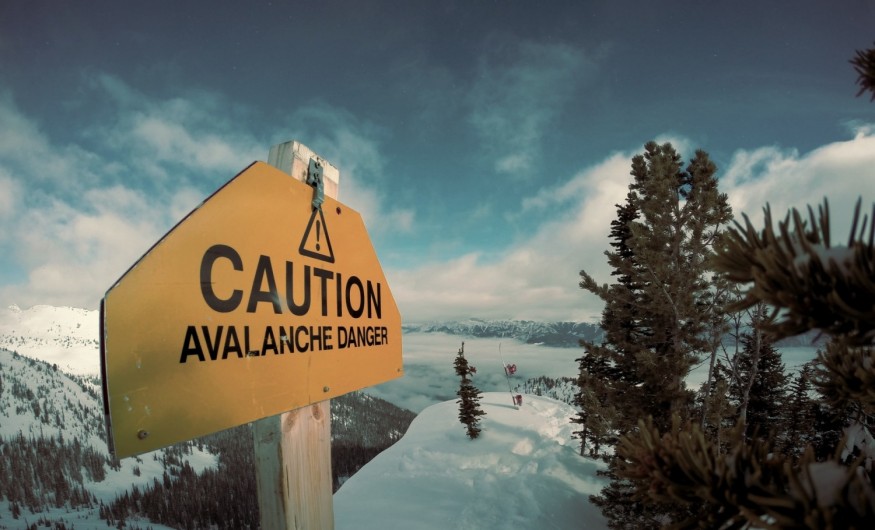Avalanches are dangers that must be anticipated and taken seriously when in the mountains. Avalanches are thought to claim the lives of 150 people annually throughout the world.
Four underlying factors-a steep slope, a weak layer, a snow cover, and a triggering event-are responsible for their development. These are the top 5 deadliest avalanches on record worldwide, according to death toll:
1950-51 Austria - Switzerland Border Avalanche
The European Alps experienced "atypical weather conditions" in the winter of 1950-1951, which resulted in more snow than usual. Nearly 15 feet of snow fell in three days at one point, and the season's extreme avalanche conditions were caused by the convergence of an Atlantic warm front and a polar cold front with strong winds.
Over 649 avalanches were recorded in just three months, resulting in the deaths of over 265 residents. Furthermore, more than 500 cattle perished and 900 buildings were destroyed, according to Switzerland.
2015 Panjshir, Afghanistan Avalanches

In February 2015, a deadly series of avalanches claimed the lives of at least 310 Afghans in just four days. According to reports, there was too much snowfall for the mountains in Afghanistan's Panjshir Province to withstand. The region has a very mountainous and rocky topography.
To assist with search and rescue operations, about 1,000 Afghan soldiers were dispatched to the area. Around 100 homes were destroyed, and there were blocked roads, stuck cars, and no power. The avalanches in 2015 in Afghanistan were among the worst ever observed and by far the worst that the nation has ever experienced.
1962 Huascarán, Peru Slide
One of the world's tallest mountains, Huascarán, is located in the Andes at a height of 22,205 feet. On January 10, 1962, a six-million-ton glacier that was extremely large slid nine miles off Huascarán. 4,000 people were said to have perished, and the towns of Huarascucho and Ranrahirca were buried beneath 40 feet of ice, mud, boulders, trees, and other debris. 10,000 animals were killed.
To add to that, millions of dollars worth of agriculture was lost, and several nearby towns started to flood as a result of the rivers being blocked off, with only a few people being fortunate enough to survive.
1916 Mount Marmolada, Italy Avalanche
As World War One reached its height of ferocity in 1916, barracks were being constructed on Mount Marmolada to house the Austro-Hungarian Kaiserschützen. In the Italian Dolomites, perfect avalanche conditions were created in the winter by a combination of heavy snowfall and rising temperatures. On December 13, 1916, on top of the barracks, 200,000 tons of snow, rock, and ice descended the mountain.
Only a small number of soldiers perished in this incident, but numerous avalanches slid on the same day and over the following few days. There is little evidence to back up the widely held theory that soldiers shot at the mountainside on purpose to trigger avalanches as weapons. The death toll rose as more avalanches happened, and it is estimated that there were 9,000-10,000 casualties in total, or about 1% of all deaths in WWI, from the series slides.
1970 Huascarán, Peru Slide
The deadliest avalanche ever seen on Earth was brought on by the Ancash undersea earthquake. This avalanche also came down from Huascarán in Peru, but this time it was much more devastating. Between 22,000 and 70,000 Peruvians are thought to have died, and thus more than 10 villages were severely damaged.
Taking place on May 31, 1970, In addition to causing a glacier and snowfield to release, the earthquake also caused a large amount of loose dirt, rock, and surface water to be picked up by an avalanche, giving rise to the appearance of a mudslide. At its top speed, the debris moved at a distance of about 100 miles. According to a report issued by the United States, such an occurrence might not happen again for millennia.
© 2025 NatureWorldNews.com All rights reserved. Do not reproduce without permission.





